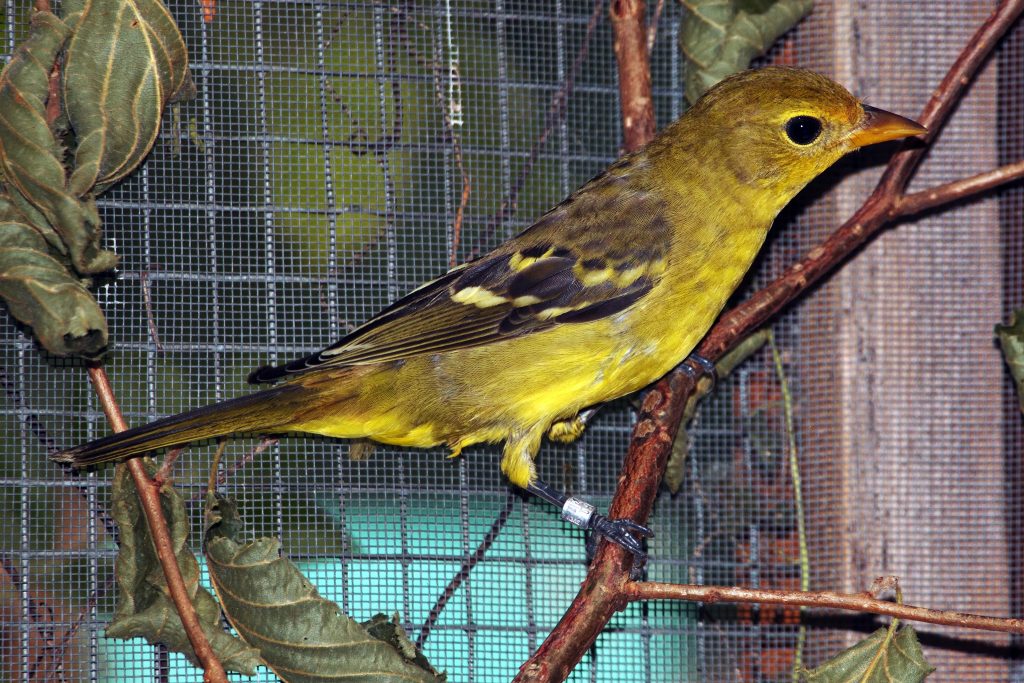Support Us
Since 1979 more than 140,000 animals have been treated by Wildlife Rescue.
Thanks to the support of individuals like you, Wildlife Rescue can provide a lifeline for animals in distress.
Every year, billions of birds migrate across North America. Herons, Sandpipers, Cranes, and even hummingbirds all migrate to escape the cold Canada’s winters bring. Unfortunately, many of their journeys have been disrupted by the wreckage from wildfires, forcing them to take new routes in unfamiliar territory. With the new territory comes new dangers – electrical wires, tall glass buildings, fatigue, and more.

Perfected after hundreds of years of evolution, birds have created unique migration routes that suit their needs. The long (and sometimes) short trip from their spring habitat to their winter habitat happens for one main reason – food! When winter hits, the populations of insects and other small organisms decline, making food scarce for birds.
Since British Columbia’s environment is no longer hospitable for certain species during winter, many birds opt to go to southern locations. The distances vary, however – some species migrate much farther than others.
Permanent residents stay in one location the entire year, braving the cold and the snow! Steller’s Jays, British Columbia’s official bird, reside here year-round, finding all the food and shelter they need locally.
A little bit more adventurous, short-distance migrants move only slightly, often switching to lower elevations to ride out the winter. Known for only flying short distances, California Quail is a great example of this, since they tend to move around a large area seasonally.
Known for moving across British Columbia and even into the United States, medium-distance migrants like Blue Jays will travel across provinces to find the shelter and food they need.
The farthest-traveling, long-distance migrants will move from northern climates (like BC) to warmer locations in Central and South America.
Unfortunately, the changing climate has led to these migrating birds having many issues on their travels south. With wildfires re-shaping forests and woodlands, many migrating birds have had to restructure their migration patterns, leaving them more at-risk to new threats, such as electrical wires, human interaction, and window strikes.
An invisible danger, window strikes kill 16 to 42 million birds a year in Canada alone since birds are not used to this unnatural material. Seeing the reflection of the sky in glass can confuse them since they are unaware what they are seeing is not real. Even artificial lights within the home can confuse birds since the bright light distorts their vision.
Of course, there are easy ways to make sure birds migrate safely, such as…
Evaluating all windows: How reflective and transparent are your windows? Is there noise or wind barriers around your home? Evaluating the home from the perspective of a migrating bird is a great way to find problem areas before they hurt any birds.
Using paint or soap: One simple way to adjust windows so that they are safe for migrating birds is to use paint! To make sure small birds avoid the windows, vertical marks should be less than 5 centimetres apart, and horizontal marks should be less than 5 centimetres apart across the whole window. Tempera paint and soap applied to the outside of the window are inexpensive solutions.
Image: FLAP Canada
Adding decals: Adding stickers, tape, and even sticky notes to windows around the home using the rules above will make sure birds avoid those spaces!
Using blinds: Naturally, a long-term solution is using blinds, since they are already spaced closely together and will help birds avoid the window. Screens are also another solution.
Helping injured birds is another great way to help! If you see a bird that has exposed bone or blood, bugs or insects covering it, no feathers, or a bird that is sleeping, human intervention is required. Please contact our Support Centre for support and guidance.
Let’s keep these busy birds safe!